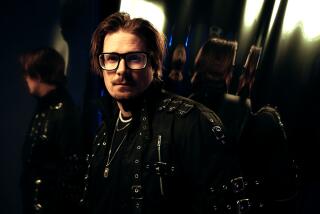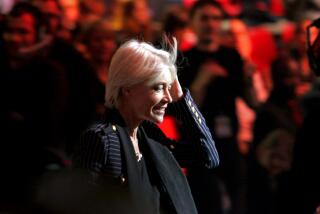Tom the obscure
THOMAS HARDY has been widely read and much reported on, but he remains an enigmatic figure and very hard to assess. As we learn from Claire Tomalin’s biography, paradox abounds. Revered and reviled in equal measure, Hardy was hailed both as a revolutionary and an arch-conservative. Born poor, he died rich; a melancholy and secretive man, he was happy in the Savile Club and pleased by invitations to the tables of the great. Hardy was a country boy who spent -- as soon as he could afford it -- the “Season” in London; self-taught and bookish, he never went to college but gloried in the offers of honorary degrees. Most successful as a novelist, he gave up the writing of novels; “Jude the Obscure,” his last great work of fiction, excoriated the society he had been at pains to join. His writing veered wildly from care-filled to careless; few authors have published so much that is brilliant adjacent to so much that is not.
The son of a builder and trained as an architect, he designed his own house, Max Gate, but paid more attention to the walls and trees than to electricity or indoor plumbing -- of which there was next to none: “He slept in an unheated bedroom and had his hot water brought up in jugs.” He was a prodigious walker and also learned to ride a bicycle, enjoying several sojourns in Europe, but Wessex remained his true home. His ill-tempered terrier -- named Wessex -- received the lavish affection the writer elsewhere withheld. He was estranged from his first wife, Emma, who would not speak to him and who slept apart from him for years, yet produced a series of vivid love poems to and about her, but only after her death.
A devoted son and sibling, he had no children of his own; family quarrels were frequent, and the wife of his old age, Florence, described her predecessor as insane. Hardy’s conflicted heart was cut out of his body and buried in Emma’s grave in the churchyard at Stinsford in Dorset, where his parents and grandparents also lay; the rest of his body was cremated and interred in London’s Westminster Abbey. As Tomalin writes:
“Inside, the floor of Poets’ Corner was covered with a white-edged purple carpet with a small oblong hole in the centre, also edged in white, where the urn was to go. Ten pallbearers were assembled, the Prime Minister, Baldwin, and the leader of the opposition, Ramsay MacDonald, the heads of Magdalene College, Cambridge, and Queen’s College, Oxford, and six writers: Housman, Kipling, Shaw, Barrie, Galsworthy and Gosse.”
As this list of worthies should suggest, the writer was very much an establishment figure by the time of his death in 1928, at age 87. Biographies are numerous, as well as a two-volume Life, a quasi-autobiographical account edited by the second Mrs. Hardy (Hardy wrote or dictated most of it; she brought it into print). There are collections of letters, picture books of his beloved countryside, movies and plays, a vast compendium titled “Thomas Hardy A to Z,” edited by Sarah Bird Wright and subtitled “The Essential Reference to His Life and Work.” This runs to more than 400 small-print pages, and it’s not therefore inappropriate to ask why we need another book about this resolutely private person whose work should speak for itself.
Do we want or need yet another biography of Thomas Hardy? Does anything important remain to be discussed? The answer, according to Tomalin, is an emphatic yes. Her calm and knowing book proves worthy of its subject. A biographer of stature, whose “Samuel Pepys: The Unequalled Self” won the Whitbread Book of the Year Award in 2002, she has also written studies of Mary Wollstonecraft, Percy Bysshe Shelley, Katherine Mansfield and Jane Austen. And she confronts head-on the difficulties described above:
“Hardy’s public persona was now secure. He remained hard to know.... None of his friends quite fathomed him. Gosse, one of the oldest, found him ‘sphinx-like’ and ‘unrevealed,’ his genius a mystery. Yet, although he resented intrusions into his privacy, he accepted a surprising number of visitors and allowed himself to be much painted, photographed and drawn. Most of those who came to see him spoke of his gentleness and sensitivity, although H.G. Wells was aghast to see that the brave author of ‘Tess’ and ‘Jude’ was nothing more than ‘a little grey man.’ ”
In her introduction, Tomalin states: “This book is about how Hardy became a writer, poet and novelist,” and she maintains this focus throughout. Concise and elegantly phrased, her book is not an attempt to decide whether Hardy did or didn’t sleep with his cousin, or whether he was or wasn’t a necrophiliac (as others have suggested with spectacular irrelevance and no foundation of fact). Nor is it a sustained analysis of his romantic entanglements, his marital misfortunes, his politics or his inner turmoil. Significantly, she takes the writer’s measure by writing of his art:
“He believed, and said, that he was a poet and not a novelist, and that he wrote novels to make money; and his businesslike attitude to getting well paid for them, and relative indifference to making them as good as they could be, relate to this belief. His method was as far as possible from the perfectionism of a Flaubert, and he had very little to say about his approach to writing fiction.”
Although never quite dismissive, Tomalin can grow irritable with her subject; one has the sense that she felt more kinship with Austen and, more recently, Pepys. There’s such deep-veined disappointment embedded in Hardy, so much withheld or chary that one feels his biographer’s fond patience wane. Tomalin also deploys to great advantage the eyewitness accounts of, among others, Leslie Stephen, Leonard Woolf and Sydney Cockerell, not all of them always flattering; they put flesh on the old icon’s bones. “He was often despondent even once he had become successful and rich.” Here, Tomalin equates Jude Fawley’s fate (in “Jude the Obscure”) with that of his creator:
“Towards the end of the book, he says, ‘There is something external to us which says, “You shan’t.” First it said, “You shan’t learn!” Then it said, “You shan’t labour!” Now it says, “You shan’t love!” ’ It is [Hardy’s] own summary of his experience of life.”
In the poetry, however, the writer is more confessional, less veiled:
“What kept him going in these late years -- eighty-four, eighty-five, eighty-six, eighty-seven -- was the simple daily habit of picking up his pen. ‘I never let a day go without using a pen. Just holding it sets me off; in fact I can’t think without it. It’s important not to wait for the right mood. If you do it will come less and less,’ he told a visitor.”
Tomalin’s discussion of his poetry provides the book’s true through-line, and it’s first-rate. In her discussion of Hardy’s late poems -- the book begins with a sustained analysis of his elegies and eulogies for Emma -- Tomalin displays both tact and critical acuity. That the author of such perfect lyrics as “The Voice,” “The Darkling Thrush” and “You Did Not Come” should also have written a bombastic quasi-epic like “The Dynasts” is hard to reconcile. It isn’t easy, truly, to take this artist’s measure. But in the end, I’d guess, this will stand as the best-proportioned of his myriad portraits. Neither hagiography nor “warts-and-all” but a keen-eyed study of Hardy’s life, it sends us back -- as biographies should -- to the work itself. *
More to Read
Sign up for our Book Club newsletter
Get the latest news, events and more from the Los Angeles Times Book Club, and help us get L.A. reading and talking.
You may occasionally receive promotional content from the Los Angeles Times.







